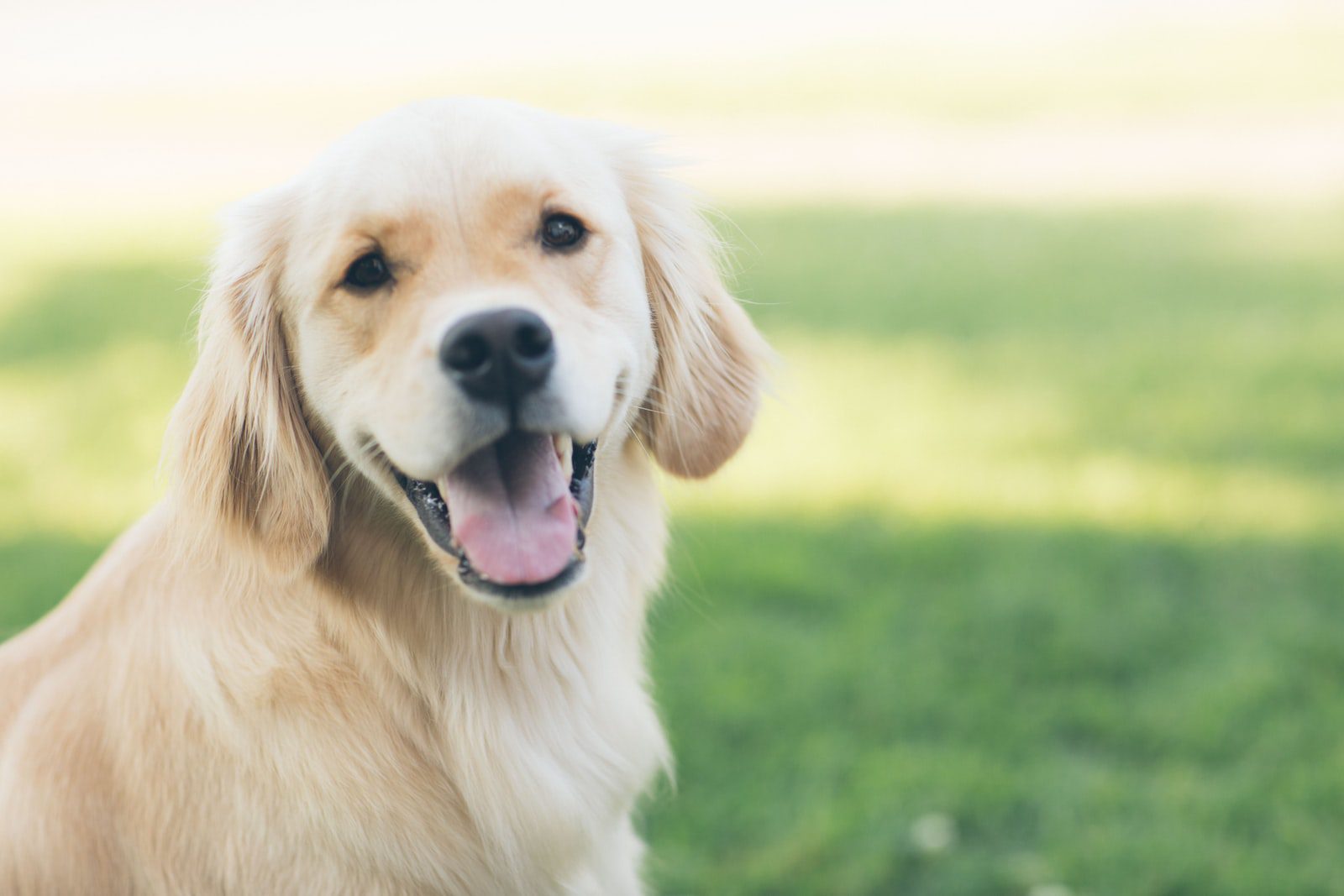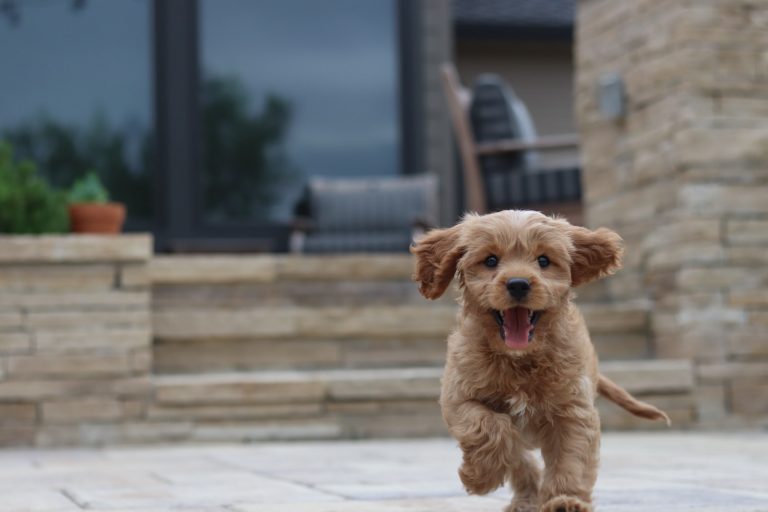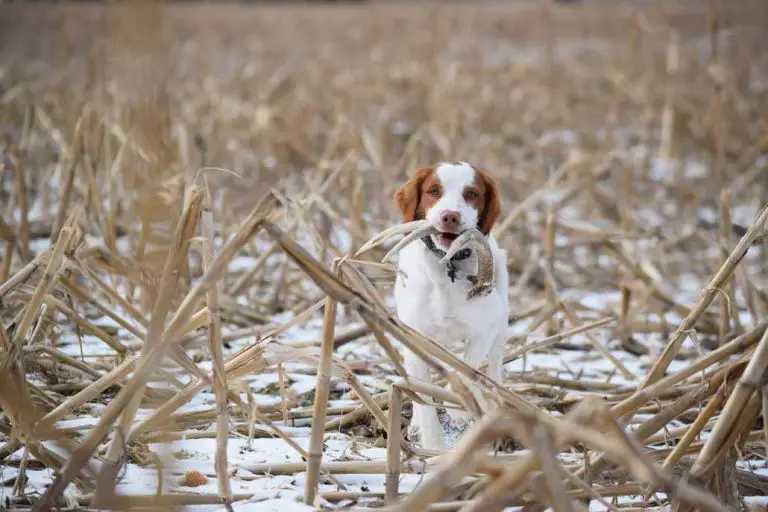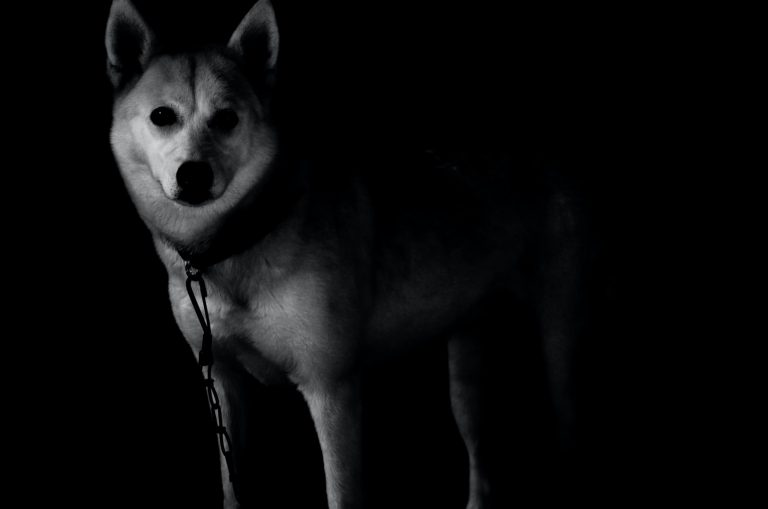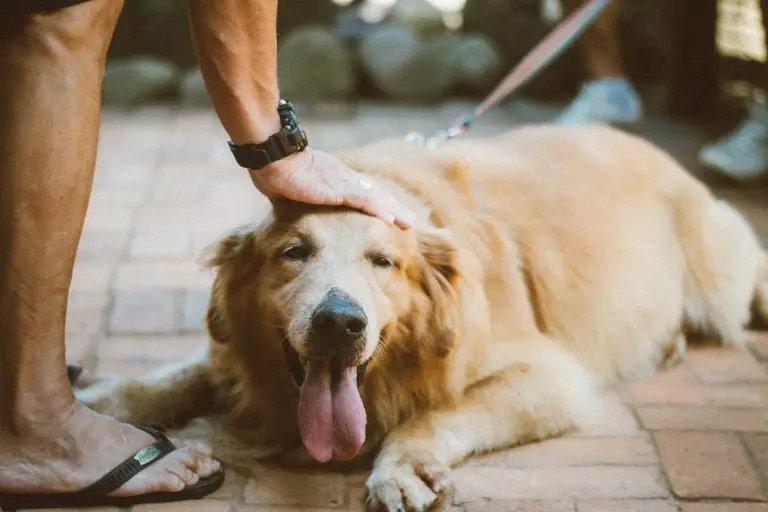Dogs may have evolved from ferocious wild wolves to cuddly buddies; there are some things they can’t get rid of.
Despite being friendly and mellow, dogs are brilliant and responsive creatures. They can smell your mood, and do whatever it takes to make you happy if you are sad.
Similarly, they respond quickly to your commands. They are quick learners, and through regular reinforcement, learn the behavior you want them to exhibit.
I have been a dog person since I was a little boy in school. Having spent my whole life with canines, I have realized that they try to indulge in whatever you do, and even sometimes reenact your actions.
You might find it a little weird, but dogs can smile when glad. But, they rarely smile when you want them to. However, with time, I realized that it is easy to make your dog smile.
There are specific triggers and techniques which can make your fuzzy canine grin. If you are one of those dog owners, who want their four-legged buddies to smile, continue to read.
Here are some easy tips that will answer your lifelong question “how to teach your dog to smile?”
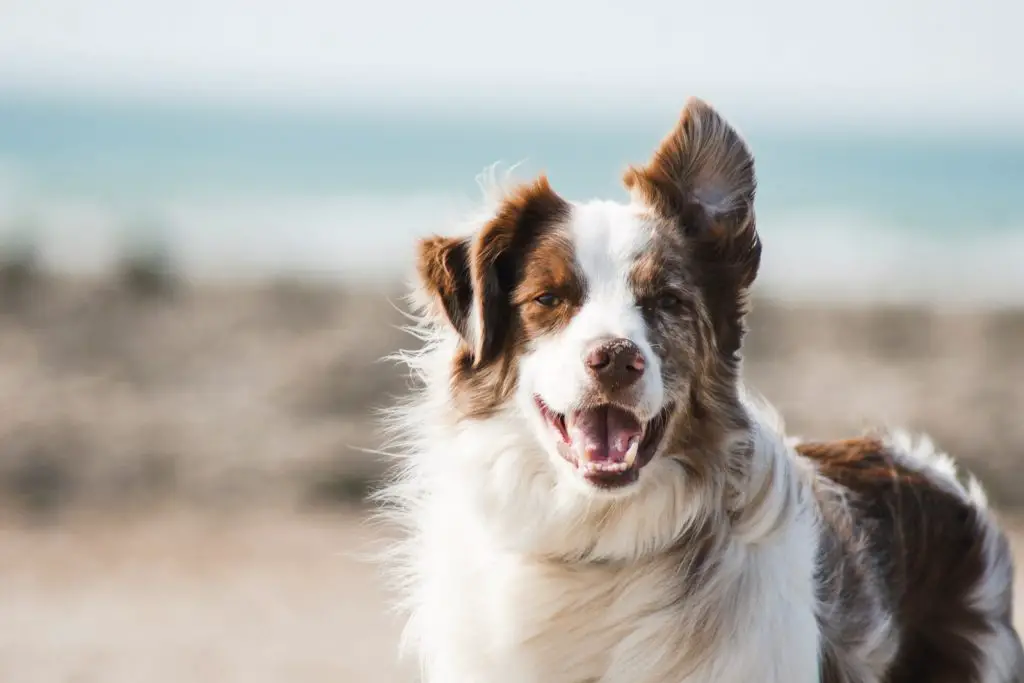
Why Is It Hard for Dogs to Smile?
During our relationship with our dogs, we often ask ourselves whether or not they are happy. There are times when we find our dog smiling at us for no reason. Most of us find it difficult to understand why they are smiling and misinterpret this gesture for happiness.
Most dog owners can quickly tell whether or not their dog likes or dislikes something, but some expressions can be confusing to figure out. In most cases, smiling alludes to happiness or content, but unlike humans, dogs don’t always smile when pleased.
Contrary to popular belief, dogs exhibit their emotions through their body language, instead of expressions. Every time a dog wants to express happiness or content, it would wag its tail, raise its ears, or relax its body.
Research shows that when a dog is relaxed, its mouth opens wide, its tongue slightly comes out, and the edges of its mouth are curved upwards. These relaxed expressions often translate to happiness or contentment.
Some dog experts say that a dog’s smile is a learned behavior it has developed after spending a significant amount of time with humans. Simply put, when a dog smiles, it is trying to copy what is masters are doing.
In most cases, even though a dog is seemingly smiling, but the smile could denote a minor discomfort or stress. To distinguish between happiness and distress in dogs, we must learn to read specific cues.
When a dog’s tongue is inside its mouth, it means that the dog is uneasy or stressed. On the flip side, an outwardly hanging tongue means the dog is happy and satisfied. On the same measure, light panting means your dog is relaxed, while heavier breathing could indicate fear or anxiety.
The tricky part is to distinguish between contentment and mild discomfort. Unlike humans, when dogs are incredibly stressed or scared, they smile their brightest, and sometimes even show their teeth. Such smiles are seen when a dog is fearful or feel subordinate.
Unlike showing its teeth when angry, a frightened smile is combined with slightly droopy ears. Although experienced dog people can spot the difference, some dog expressions are so subtle that spotting the difference becomes almost impossible.
What It Takes to Get a Dog to Smile?
It takes a good amount of behavioral encouragement on your part to get a dog to smile.
If your dog smiles unnecessarily a lot, you need to pay attention to its body language. As we discussed in the previous paragraphs, a dog’s body language says a lot about whether a dog is happy or in some form of stress.
Interestingly, dogs do smile when they are being hugged. The only difference is that this is the smile of distress, instead of happiness. Although hugging a dog is extremely common, but it does make your dog feel slightly stressed.
Your dog trusts you, and when you embrace them, the stress does not denote a sense of fear or anxiety. However, it does make them feel a little uncomfortable, and their expressions are mistaken for happiness and relaxation.
If you find your dog smiling at odd times or unnecessarily, you need to monitor their smiling patterns closely. If your dog tends to smile every time you turn the stereo on, you need to figure out whether it is the smile of pleasure of that of stress or discomfort.
If you pet your dog and it gets stressed out, it is a sign that you are not doing it the right way. Petting should make your dog feel relaxed and not uncomfortable.
If your dog grins when meeting a specific person, it doesn’t necessarily mean that they are happy to meet them. It could also mean that the particular person gets them nervous, which leads to smiling. If you can decipher your dog’s expressions, you can easily address its needs.
If you find your dog smiling around children, be extra careful. The presence of a child doesn’t necessarily make a dog feel comfortable. Even scarier is the fact that small children have no idea whether a dog is genuinely smiling at them.
The dog could be snarling at the child with anger. Studies have shown that a fair percentage of kids fail to understand dogs’ expressions and mistake an uncomfortable smile for happiness.
We fail to realize, but dogs are fully capable of demonstrating their emotions through their expressions. Unfortunately, we tend to project our own emotions onto dogs and want them to react the way we do.
Dogs have their ways of expressing their feelings, and just like any other language, we can determine how a dog feels. So, if your dog shows its teeth, make sure to read its entire body language before concluding that they are doing it out of joy.
Do Dogs Have Different Types of Smiles?
When it comes to dogs’ facial expressions, we consider four basic expressions as ‘smile.’ Dogs tend to exhibited complicated emotions, but they don’t do it in the same way as we humans do.
As discussed in the previous paragraphs, an open mouth and light panting could mean happiness, but in some cases, it could also translate to stress or fear. As discussed before, to understand a dog’s expressions fully, we must focus on its body language rather than its looks.
Here are some common facial expressions of dogs which are often mistaken for smiling.
In dogs, an expression of happiness and relaxation comes with squinted eyes and relaxed and loose lips rather than tightly pulled back.
When a dog is happy and relaxed, its facial muscles are also comfortable, and its ears usually are settled, rather than pulled back against the skull. The body language of a happy dog includes a relaxed smile and wagging tail, and often a happy dance.
Happiness is some cases is the outcome of the arrival of a dog’s favorite person. This relaxed grin also appears when a dog lays down relaxed after an intense workout session.
In some cases, even though a dog is smiling but its facial muscles are tight and its ears a tightly pulled back, and the dog pants heavily. Heavy panting is a sign of fear and stress in dogs, whereas slow breathing denotes happiness and relaxation.
When a dog is stressed, its eyes are open wide, and it even shows its teeth. In such situations, the dog pulls its head back to its neck. It shows that the dog is tensed, nervous, or shy. Tight limbs are also a sign of stress or fright.
Often, you will find your dog smiling in a submissive manner. When that happens, it is a sign that the dog is showing appeasement and is feeling uncomfortable.
When a dog grins passively, its lips are retracted tightly, and it even shows it pearly whites. The body is tensed, the eyes are wide open, and the ears are pinned backward.
To some people, it may appear as a gesture of aggression, but submissive grinning is different from an angry snarl. However, if you do not know this dog all too well, it is better to exercise caution. If the dog is intimidated, it could also fight back as a reaction.
Have you ever seen those videos on the internet, where a dog is shying away from a camera, exhibiting an unusual grin? It happens because sometimes dogs mistake cameras and phones for potentially dangerous weapons, which could harm them.
We have discussed in the beginning that dogs are quick learners, and do whatever it takes to make their human feel happy. Therefore, a submissive grin can often turn into a habit when backed with those delicious treats.
Understanding a dog’s smile is difficult for us humans. Usually, we tend to project our own emotions onto them and interpret their expressions as our own. This process is known as anthropomorphism.
Even though anthropomorphism is harmless, but can sometimes be dangerous if the dog’s expressions are not understood correctly. Research shows that most cases of dog bites originate from an event when a dog’s snarl is mistaken for joy and happiness.
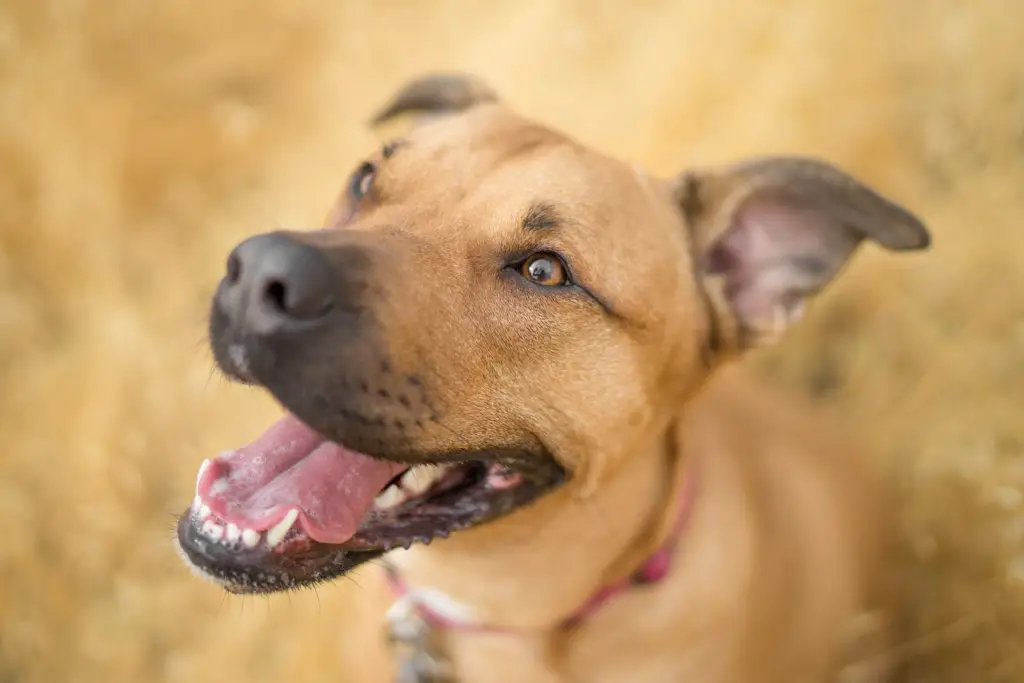
How to Train a Dog to Smile or Show Teeth?
If you are a devout dog person, you will understand that teaching a dog to smile is just like teaching them to learn some other behavior. It might seem difficult at first, but it isn’t.
To teach a dog to smile, all one needs is the right mix of patience, reinforcement, and attention. With dedication, your dog can quickly learn to smile when given the cues.
As discussed before, teaching a dog to smile is just like teaching them any other habit. To do so, you need to possess a basic knowledge of dog training.
When it comes to training a dog, timing plays a crucial role. To make the dog learn a behavior, it needs to be treated or rewarded immediately, every time it successfully obeys a command.
Most people reward their dog with a yummy dog treat, or by phrases like “good boy” or “good job.” It makes the dog feel loved, and the likelihood of them repeating the same behavior is increased significantly.
Here are some methods that will allow you to teach your dog to smile.
A clicker is a small mechanical device every time its button is pressed. A clicker proves to be a useful tool when trying to teach your dog to smile. The clicker method includes the following steps.
- Gather all the dog training supplies, which include a clicker and lots of yummy dog treats.
- Slightly touch your dog on the cheeks or the whiskers. As a result, the dog will open up its mouth or show its teeth.
- When your dog opens ups its mouth, click the clicker and reward your dog with a treat.
- As you touch your dog’s cheek, lightly lift the cheek to expose its canines.
- As the outcome was what you wanted, click the clicker again.
- Continue to do the same, but add slight command, such as “smile” or “show your teeth.”
- Now, the dog must have grown accustomed to the exercise. Practice as much as possible, combining the actions with the commands.
- Reward your dog with a click and a treat every time it obeys your command.
- There are times when dogs show their teeth without any command or reinforcement. Look out for those times, and every time your dog shows its teeth, give it a command, and before you can know it, it will turn into a trick.
- If your dog is accustomed to tooth brushing, it will automatically lift its lips every time the brush comes close to accommodate the brush.
- Every time you give your dog a treat, it lifts its lips and exposes its teeth.
- Every time you catch your dog showing its teeth, give them the command followed by a treat.
- Repeat the reward technique more often.
Treats are a great way of getting your dog to do anything you want them to do. However, if done too often, treats can be taken as bribes. This often makes a dog behave in a certain way, only when it knows there is food involved.
- Ask your dog to smile, and after giving the command, wait for a few minutes.
- Do not give the treat unless the dog has obeyed your command.
- The treat must only be given occasionally.
- If you use treats to train your dog too often, your dog won’t respond to the command, unless there are treats involved.
Now that a strong connection has been developed between the command and the behavior start initiating training sessions.
Here are a few tips to follow.
- Use vocal and physical encouragement when training your dog. Every time your dog responds to a command, offer them physical and verbal encouragement.
- Continue the activity until the dog has mastered the behavior.
- Keep an eye on the new behaviors your dog exhibits during these training sessions. These behaviors can provide you with an opportunity to teach your dog new tricks.
Tips on Teaching a Dog to Smile
For a person who loves dogs, the feeling of watching their dogs smile is priceless. But to make a dog smile, one needs the right amount of patience and skills. Dog are intelligent animals and they also possess the potential to surprise you in the most exciting ways.
Here are some tips on teaching your dog to smile.
- Teaching your dog to smile is just like teaching them any other behavior. Just like other behaviors, learn to reinforce their behaviors with treats and clickers.
- As discussed in the beginning, dogs come from the family of wolves, which makes them respect authority. Whenever you train the dog, take the lead, and exercise power. Not only will it keep your dog intimidated, but the likelihood of them learning behavior will increase.
- With your fingers, lift your dog’s lips, and every time you do, click the clicker to make them learn the behavior quickly.
- Positive reinforcement comes in handy when teaching a dog to smile or learning any other behavior. Whenever the dog obeys your command and exhibits a behavior, reward them with a treat.
- Rewarding your dog with a treat or two is good, but doing it too often can be taken as a bribe. Only reward your dog with a treat when it obeys your command.
- Stay firm and don’t be too lenient.
- Pick the right time to teach your dog to smile. If the dog is tired, sleepy, or hungry, it will never learn what you teach.
How to Make a Dog Smile for Photos?
Up until now, we have discussed how to teach a dog to smile. Now, let’s take a look at some techniques to make your dog appear happy and cheerful in photographs.
- The best thing to make your dog appear happy in photographs to make sure it is relaxed. Create an environment that is peaceful and comfortable. The more relaxed your dog is, the happier it will appear in the photographs. A relaxed smile is far different from a stressed one.
- Another great technique to make your dog smile for photos is by using treats. Wave a dog treat under a dog’s nose and slowly pull it upwards. The dog will look in an upward direction and will also open its mouth. This will allow you to capture beautiful photographs of your dog.
- Another great way of making your dogs smile for photographs is to capture them when they are smiling. Candid shots of your dogs are natural-looking and are far better than those that involve reinforcement and preparation.
What to Do If Your Dog Refuses to Smile?
There is nothing wrong if your dog refuses to smile. Trying too hard to make your dog smile might hurt its personality, and might even make your dog hate you for doing so.
The problem arises when you need to capture a shot of your dog smiling, and it refuses to smile. Bribing a dog isn’t always the best option as it ruins its habits. However, every time your dog smiles for a photo, reward them with a treat or two.
As reinforcement works, this will turn into a learned behavior. After some time, your dog will smile every time it sees a camera, and you won’t have to bribe them every time.
Conclusion
By now, you must have gotten the answer to the question “how to teach a dog to smile?” Always remember that just because a dog is smiling doesn’t mean it is happy.
A dog’s smile could also allude to slight discomfort or uneasiness. The only time a dog’s smile is genuine is when it is fully relaxed and happy.
To provide your dog with happiness and relaxation, spend quality time with them, play with them, and make sure they are perfectly healthy. To keep your dog healthy and energetic, make sure not to skimp on regular medical checkups.

